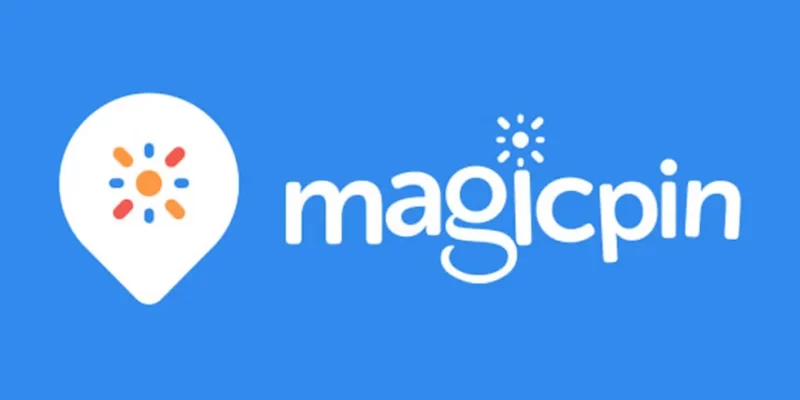Magicpin Business Model is designed to connect users with local merchants, offering them a unique platform to discover and interact with businesses. Whether it’s finding the trendiest cafes, fashionable boutiques, health clubs, or grocery stores with the best deals, Magicpin enables users to explore their neighborhood with ease. Through user-generated images, videos, and reviews, people can see where the coolest spots are and even earn cashback or rewards for visiting these locations. The platform promotes discovery for a wide range of merchants, including restaurants, spas, gyms, beauty salons, fashion retailers, and more.
Magicpin incentivizes users by giving them “magicpin points” in exchange for their purchases. These points can then be used to avail of more experiences and services at partner shops. One of the key advantages of Magicpin’s Cashback Program is that it works with any business in a city, allowing users to accumulate points regardless of the payment method they use—whether it’s cash, credit/debit card, or e-wallet.
Magicpin’s foundation lies in its location intelligence platform, with the goal of improving the retail experience in sectors like electronics, food, apparel, and pharmaceuticals. The company was co-founded by Brij Bhushan, Naman Mawandia, and CEO Anshoo Sharma, and it is revolutionizing the way local commerce operates in India.
About Magicpin and How It Operates
With the advent of smartphones, life has become significantly easier, and Magicpin is one such app that leverages this technology to help users locate stores across the city. Whether users are searching for groceries, spas, restaurants, gyms, or beauty products, Magicpin offers a seamless way to find nearby shops. Users earn magicpin points for shopping, which helps attract more customers and grow businesses. By bridging the gap between users and merchants, Magicpin creates a win-win scenario for both.
The platform plays a crucial role in promoting discovery in multiple sectors, including fashion, electronics, food, pharmaceuticals, entertainment, and home delivery services. By encouraging users to upload bills and share their experiences through images and reviews, Magicpin helps users earn rewards while benefiting retailers by increasing footfall and engagement.
Magicpin Company Details
| Company Name | Magicpin |
| Origin Country | India |
| Founded | 2015 |
| Founders | Anshoo Sharma, Brij Bhushan |
| CEO | Anshoo Sharma |
| Headquarters | Gurugram, Haryana, India |
| Industry | Technology, Retail |
| Key Offerings | Loyalty Program, Local Discovery, Rewards Platform |
| Number of Employees | Over 500 (as of last update) |
| Official Website | www.magicpin.in |
Magicpin Business Model and Revenue Model
At the core of the Magicpin Business Model is its reliance on user-uploaded bill invoices. Users upload their bills, which Magicpin’s back-end platform analyzes to track purchases and spending habits. This data allows the platform to monitor customer preferences across different categories such as groceries, fashion, and food & drink. The uploaded bills also act as a form of validation, ensuring that users receive their rewards, or “magicpin points,” which can be redeemed at partnered merchants.
Customers often share their local experiences through image stories, earning Magicpin points in return. These points can be used to unlock further experiences and services across sectors like dining, beauty, nightlife, and fashion. This interaction encourages users to continuously engage with the platform and explore more local businesses.
Magicpin’s revenue comes primarily from the merchants and brands that utilize the platform. Retailers partner with Magicpin to offer personalized deals and promotions to customers, with Magicpin charging a fee for every transaction referred through the platform. Merchants pay a pre-transaction fee and ongoing platform fees, enabling Magicpin to generate income while simultaneously driving sales for retailers.
Magicpin’s Revenue Model
Magicpin’s revenue model operates across both B2C and B2B segments, allowing it to cater to various market needs. Every transaction made through the platform earns Magicpin a commission from the merchant, which, according to CEO Anshoo Sharma, is typically between 10% to 12%. The platform also generates revenue from marketing and advertising, as businesses can use Magicpin’s data to promote their offerings more effectively.
Additionally, Magicpin supports merchants by offering real-time promotions, loyalty programs, and content updates that engage customers and increase sales. The platform helps retailers better connect with consumers, making it a valuable tool for businesses looking to enhance visibility and build customer loyalty.
Conclusion
The Magicpin Business Model is a robust system that connects users with local merchants and helps them discover the best products and services around them. Whether users are looking for trendy cafes or exclusive fashion boutiques, Magicpin makes it easy to find what they need while earning rewards. Its business model is heavily supported by merchant partnerships, with revenues generated through commissions and advertising. By enabling seamless interaction between customers and retailers, Magicpin fosters an ecosystem where both parties benefit. Ultimately, Magicpin Business Model continues to stand out by offering a platform that encourages discovery, rewards loyalty, and drives local commerce.
















